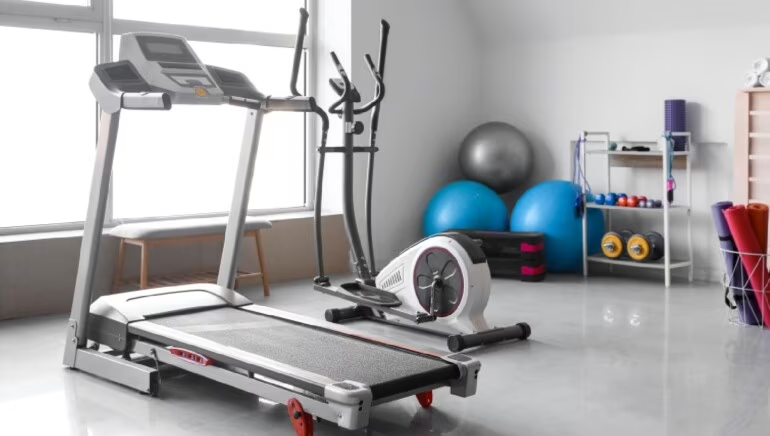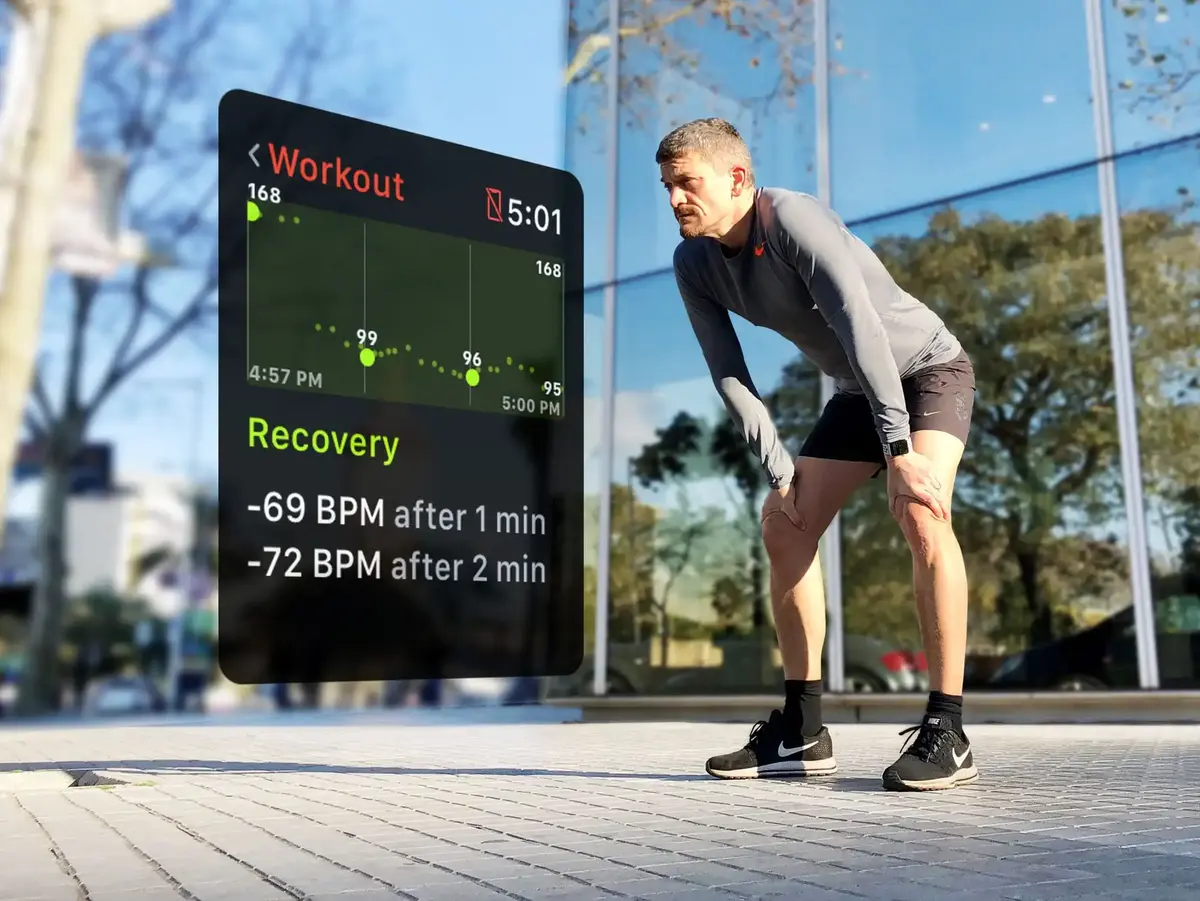Choosing Your Cardio Champion: Navigating the Gym’s Machine Maze
Hitting the gym to fulfill your weekly cardio goals? With treadmills, bikes, ellipticals, and more, picking the right machine can feel overwhelming. Here’s a guide to help you find your perfect cardio match!
Beyond the Beeline:
The Centers for Disease Control and Prevention (CDC) recommends 150 minutes of moderate-intensity exercise per week. Gyms offer a diverse array of cardio equipment – treadmills, exercise bikes, ellipticals, stair climbers, rowers – and choosing the right one can make all the difference.
Pros and Cons for Everyone:
“Every cardio machine has its advantages and disadvantages,” explains Dr. Greg Summerville, a sports medicine physician. However, these advantages and disadvantages vary depending on the individual.
Dr. Summerville personalizes exercise plans by considering factors like age, physical capabilities, mobility, any existing health conditions, and injuries. These factors, along with your specific fitness goals, determine the best equipment for you.
Cardio Champs: Beyond Endurance:
All cardio machines aim to improve cardiovascular health by increasing your heart and respiratory rate, strengthening your heart, and building endurance. Some machines, as Dr. Summerville highlights, also build strength. So, are you looking for a purely cardio workout or something that combines cardio and strength training?
Picking Your Perfect Partner:
By reflecting on your fitness goals, you can choose the machine that best suits your needs. Additionally, if you have any disabilities, injuries, or health concerns that might impact your ability to exercise safely or use a specific machine, consult your doctor before starting a new routine.
Finding Your Fitness Fun:
Ultimately, when choosing a gym machine for cardio, pick one you enjoy using (as long as you can safely do so). Finding a workout you genuinely enjoy increases your chances of sticking with it! Remember, any movement, regardless of form, is better than the “perfect” workout you never do.
Here’s a rundown of some common cardio machines and their specific pros and cons:
1. The Treadmill: Unveiling a Cardio Powerhouse
The gym floor can be a labyrinth of unfamiliar machines, each promising a unique path to fitness. But one machine stands out as a cardio classic: the treadmill. Let’s take a deep dive into the treadmill’s capabilities, exploring its strengths, considerations, and how it can fit into your workout routine.
Unveiling the Treadmill’s Design
At its core, the treadmill is a motorized platform with a continuously moving belt. This ingenious design allows you to walk, jog, or run indoors, mimicking the natural motions of outdoor movement. It’s a versatile tool for replicating outdoor cardio activities regardless of weather conditions.
Targeting Your Fitness Goals: Muscle Engagement and Endurance
The treadmill shines when it comes to building cardiovascular endurance. As Araceli De Leon, a certified personal trainer, explains, running or walking on a treadmill strengthens your heart and improves its ability to pump blood efficiently throughout your body.
But the benefits extend beyond your heart. According to the American College of Sports Medicine (ACSM), these activities engage your lower body muscles, including your quadriceps (thighs), glutes (buttocks), hamstrings (back of thighs), and calves. While not the most effective muscle-building tool, treadmills help maintain muscle tone and definition.
The Perks of Variety: Intensity and Fat Burning Potential
One of the treadmill’s biggest strengths lies in its adjustability. De Leon emphasizes the ability to customize your workout by adjusting the speed and incline of the belt. This allows you to increase the intensity of your workout, making it a great tool for interval training (HIIT workouts) which can further enhance your cardiovascular health and potentially burn more calories.
Speaking of calorie burning, a 2021 study published in the Journal of Sports Science & Medicine suggests treadmills might have an edge over ellipticals and rowers when it comes to fat burning. However, it’s important to note that this study involved a small group of male participants, and further research might be needed to solidify these findings.
Considerations for Safety and Form
While the treadmill offers a multitude of benefits, there are some aspects to consider for a safe and efficient workout. De Leon warns against straining your neck by constantly looking down at your phone or up at the gym’s TVs. Maintaining proper form is also crucial. She advises against walking too close to the console or holding onto the handrails for extended periods, as this can disrupt your natural walking stride. Aim to stay in the middle of the belt and walk freely, engaging your core muscles for stability. If you need the handrails for balance throughout your workout, consider trying another machine that might provide better support.
Finally, Dr. Greg Summerville, a sports medicine physician, reminds us that while treadmills are gentler on your joints compared to running on concrete, exercising on a track or softer outdoor surfaces might be even more joint-friendly.
The Treadmill: A Cardio Companion with Options
The treadmill is a valuable tool for building cardiovascular endurance, maintaining muscle tone, and offering a variety of workout options. However, it’s important to be mindful of proper form and potential impact on your joints. Consider your fitness goals and limitations when choosing the best machine for your needs. With careful planning and proper technique, the treadmill can become a reliable companion on your fitness journey.
2. The Exercise Bike: A Versatile Ride for Fitness
The exercise bike is a familiar sight on any gym floor, but its versatility might surprise you. Let’s explore the different types of exercise bikes, the muscle groups they target, and the unique benefits they offer.
A World of Bikes: Exploring Your Options
Gone are the days of a single stationary bike design. Gyms now offer a variety of exercise bikes to cater to different preferences:
- Air Bikes: These bikes use air resistance for a challenging workout. The harder you pedal, the more resistance you create.
- Spin Bikes: Also known as indoor cycling bikes, these bikes allow you to manually adjust resistance, replicating the feeling of riding outdoors.
- Recumbent Bikes: Offering a more reclined position, these bikes are ideal for those seeking a more comfortable lower-body workout.
These are just a few examples, and exploring your gym’s selection can help you find the perfect fit.
Powering Your Pedals: Muscles Engaged
Cycling, whether indoors or outdoors, primarily targets your lower body muscles. As Dr. Greg Summerville, a sports medicine physician, explains, your quads (front of thighs) and hamstrings (back of thighs) become the workhorses during your workout. These bikes also contribute to building overall lower-body strength.
Beyond Cardio: Unveiling Strength Potential
The beauty of the exercise bike lies in its ability to offer both cardio and strength benefits. Dr. Summerville highlights that increasing the resistance allows you to transform your cycling session into a strength-building workout alongside the cardio benefits.
Perks for All Levels and Limitations
The exercise bike offers a range of advantages for various fitness goals and limitations:
- Hill Climbing Challenge: Certain bikes allow you to increase resistance and simulate hill climbing by standing up while pedaling. This can add a dynamic element to your workout.
- Recovery Friendly: Dr. Summerville recommends stationary bikes for those recovering from lower-body injuries due to their low-impact nature.
- Balance Doesn’t Have to Hold You Back: Unlike treadmills or stair climbers, exercise bikes offer a stable platform with your feet securely placed on the pedals. This makes them a great option for individuals with balance concerns.
Considerations for a Smooth Ride
While generally considered low-impact and joint-friendly, the exercise bike might not be perfect for everyone. Dr. Summerville advises those experiencing anterior knee pain (pain in the front of the knee) to consider the elliptical trainer instead. The pedaling motion on the bike can put more stress on the knee compared to the elliptical’s gliding movement.
By understanding your fitness goals and any limitations, you can choose the best exercise bike for your needs. The next time you’re at the gym, hop on a bike and experience the diverse benefits it has to offer!
3. The Elliptical Trainer: A Low-Impact Path to Fitness
The elliptical trainer, a familiar fixture in many gyms, offers a unique blend of cardio and low-impact movement. Let’s delve into the elliptical’s design, muscle engagement, and how it can benefit your workout routine.
Unveiling the Elliptical’s Design
The elliptical trainer features two large foot pedals that move in a continuous oval path. Unlike a treadmill, your feet remain planted on the pedals throughout the exercise. Additionally, handlebars provide upper body engagement while your legs move. This design allows for a full-body workout with minimal impact on your joints.
Targeting Your Muscles: Cardio and Strength Potential
The elliptical primarily targets your lower body muscles, particularly your quads (front of thighs), hamstrings (back of thighs), and calves, according to Dr. Greg Summerville. Increasing the resistance on the machine can further intensify the workout, building lower body strength alongside the cardiovascular benefits. However, without challenging resistance, the elliptical focuses primarily on cardio.
Benefits for All Fitness Levels and Limitations
The elliptical trainer shines for its low-impact nature, making it a great choice for a variety of fitness levels and limitations:
- Ideal for Beginners: Araceli De Carlo, a certified personal trainer, highlights the elliptical’s suitability for beginners due to its low-impact design. This allows for a smooth introduction to exercise without the stress on joints.
- Recovery and Physical Therapy: The elliptical is often recommended for people recovering from injuries or undergoing physical therapy. The low impact minimizes stress on recovering muscles and joints.
- Accommodating Limitations: As noted in a study published in the Journal of Sports Science & Medicine, the elliptical, along with the rowing machine (discussed later), can be a suitable option for individuals with physical disabilities like cerebral palsy and multiple sclerosis.
Maintaining Proper Form for Optimal Results
To maximize the benefits of the elliptical and avoid injury, proper form is crucial. De Leon cautions against common mistakes like hunching, lifting your heels excessively, or leaning too far back while using the machine. She emphasizes maintaining proper posture and keeping your center of gravity centered on the elliptical for a safer and more effective workout.
The elliptical trainer offers a valuable tool for low-impact cardio, muscle engagement, and a versatile workout option for various fitness levels. With proper form and awareness of your limitations, the elliptical can be a reliable companion on your fitness journey.
4. The Stair Climber: Scaling Your Fitness Journey
The stair climber, a gym staple, lives up to its name by mimicking the act of climbing stairs. But its offerings extend beyond simply replicating this everyday activity. Let’s explore the different types of stair climbers, the muscle groups they target, and the benefits and considerations to keep in mind.
Stairway to Fitness: Exploring the Options
The world of stair climbers offers a variety of options to cater to different preferences:
- Step Mill: This type resembles a revolving staircase or escalator, offering a continuous, cardio-focused workout where you adjust the speed for increased intensity.
- Stair Stepper: These machines feature individual pedals for each foot, allowing you to focus on muscle engagement and strength building through adjustable resistance.
- Vertical Climbers: Ladder-like steppers provide a challenging workout that resembles climbing a vertical ladder.
These are just a few examples, and exploring the options available at your gym can help you find the perfect climbing match for your needs.
Climbing Your Way to Stronger Muscles
Stair climbers excel at engaging and strengthening specific muscle groups. Dr. Greg Summerville highlights that stair steppers effectively target your glutes (buttocks), quads (front of thighs), and calves, offering a more muscle-building workout compared to step mills. Step mills, on the other hand, prioritize a cardio-based experience, where you adjust the speed to increase intensity.
Reaching New Heights in Calorie Burning
One of the stair climber’s biggest perks is its high-intensity nature. Dr. Summerville emphasizes that stair steppers can be some of the most effective calorie-burning machines in the gym due to the intensity of the workout. However, this also translates to a shorter workout duration compared to lower-intensity exercises.
Considerations for a Smooth Climb
While the stair climber offers numerous benefits, there are some key aspects to consider:
- Joint Limitations: Individuals with knee or hip problems might experience pain while using the stair climber. Dr. Summerville recommends opting for the elliptical trainer in such cases as it provides a lower-impact alternative.
- Form Matters: On step mills, using the handrails excessively to support your weight can put undue stress on your shoulders and wrists, according to Araceli De Leon, a certified personal trainer. Focus on using your leg muscles for propulsion instead.
- Listen to Your Body: If you find the stair climber too challenging to maintain a proper pace, decrease the speed. Pushing yourself beyond your limits can lead to injury.
By understanding the different types of stair climbers, their target muscles, and the considerations for safe and effective use, you can incorporate this machine into your workout routine to reach new heights in fitness.
5. The Rowing Machine: A Full-Body Powerhouse
The rowing machine, often seen gathering dust in a gym corner, holds the potential to be an incredibly versatile workout tool. Let’s delve into its design, muscle engagement, and the benefits it offers for your fitness journey.
Mastering the Mechanics: The Rowing Machine’s Design
The rowing machine features a sliding seat, handlebars, and footrests. The user simulates the rowing motion by sitting on the seat and pushing their legs back while pulling the handle towards their body. This seemingly simple movement engages a surprising number of muscle groups.
A Symphony of Muscles: Total-Body Engagement
The beauty of the rowing machine lies in its ability to target multiple muscle groups simultaneously. According to Dr. Greg Summerville, the rowing motion works your upper back and shoulders, quads (front of thighs), calves, and glutes during both the pushing and pulling phases of the exercise. This translates to a well-rounded workout that strengthens your entire body.
A One-Stop Shop for Fitness Goals
The rowing machine’s versatility is one of its biggest strengths. Dr. Summerville highlights its ability to cater to various fitness goals:
- Total-Body Conditioning: The rowing motion provides a complete workout, incorporating both cardio and muscle strengthening for your upper and lower body.
- Customizable Intensity: Adjusting the resistance on the machine allows you to personalize your workout. Lower resistance results in a more cardio-focused exercise, while increasing resistance builds muscle strength.
- Joint-Friendly Exercise: An added benefit of the rowing machine is its low-impact nature. This makes it a suitable option for those with joint concerns.
Conquering the Initial Challenge
The rowing machine might appear intimidating at first glance, especially for beginners. However, Dr. Summerville assures us that mastering the rowing motion becomes easier with practice.
Here are some tips for a smooth rowing experience:
- Start Low, Go Slow: Begin your rowing journey with the lowest resistance setting. As your confidence and stamina improve, you can gradually increase the resistance.
- Embrace the Learning Curve: Give yourself time to learn the proper rowing technique. Focusing on smooth form will maximize your results and minimize the risk of injury.
The rowing machine, once demystified, can become a valuable tool for building strength, improving cardiovascular health, and achieving a total-body workout. So, the next time you see a rowing machine at the gym, don’t be afraid to give it a try! With a little practice, you might discover a new favorite exercise machine.
6. The Arc Trainer: A Biomechanically Correct Path to Fitness
The gym floor can be intimidating, overflowing with unfamiliar machines promising sculpted physiques and improved endurance. But the Arc Trainer stands out for its unique design and focus on biomechanics. Let’s explore what the Arc Trainer offers, the muscles it targets, and how it can benefit your workout routine.
Unveiling the Arc’s Design: A Focus on Movement
Unlike treadmills or stationary bikes, the Arc Trainer features a unique elliptical path for your feet. This patented design mimics a natural running motion while minimizing stress on your joints. Imagine a gentle, continuous arc instead of the repetitive pounding of traditional running.
Powering Your Stride: Muscle Engagement and Efficiency
The Arc Trainer’s innovative design translates to effective muscle engagement. While primarily targeting your lower body muscles, including your quads (front of thighs), hamstrings (back of thighs), and calves, the Arc Trainer offers some key benefits:
- Biomechanical Advantage: Dr. Greg Summerville, a sports medicine physician, explains that the Arc Trainer’s design allows for greater muscle activation compared to some traditional cardio machines. This means you can achieve a more efficient workout at a higher intensity.
- Reduced Impact: Unlike treadmills, the Arc Trainer minimizes impact on your knees and ankles. This makes it a suitable option for individuals with joint concerns or those returning from injuries.
A Well-Rounded Workout Option
The Arc Trainer goes beyond simply mimicking a running motion. Here’s how it can benefit your workout:
- Cardio Champion: The Arc Trainer excels at providing a cardiovascular workout. By adjusting the incline and resistance, you can customize the intensity to match your fitness level and goals.
- Strength Potential: While not a dedicated strength machine, the Arc Trainer can contribute to building and maintaining lower body muscle tone, especially when used with higher resistance settings.
- Improved Coordination: The Arc Trainer’s movement pattern can promote better coordination between your upper and lower body, enhancing overall balance and movement efficiency.
Considerations for a Smooth Stride
While the Arc Trainer offers numerous benefits, here are some things to keep in mind:
- Learning the Motion: The Arc Trainer’s unique movement might require a short adjustment period compared to more traditional machines. Don’t hesitate to ask a gym staff member for guidance on proper form to maximize your workout and avoid injury.
- Listen to Your Body: As with any new exercise, start slowly and gradually increase the intensity and duration of your workouts as your fitness level improves.
By understanding the Arc Trainer’s design, muscle engagement, and its well-rounded benefits, you can incorporate it into your workout routine for a biomechanically efficient and joint-friendly cardio experience. So, the next time you’re at the gym, give the Arc Trainer a try and discover a new way to move your body!
Final Note: The Perfect Cardio Partner Awaits
The gym can be overwhelming, but with this guide in hand, you’re no longer lost in a maze of machines. Remember, the most effective cardio machine isn’t necessarily the one with the most bells and whistles – it’s the one you enjoy using consistently. Consider your fitness goals, limitations, and preferences when making your choice. Don’t be afraid to experiment and try different machines until you find the perfect partner for your cardio journey. With dedication and the right equipment, you’ll be well on your way to achieving your fitness aspirations!





This post is exactly what I was looking for. You’ve addressed all the questions I had and provided clear, actionable advice. Thank you for sharing your expertise.
I appreciate that you take your time out and read this article , stay connected